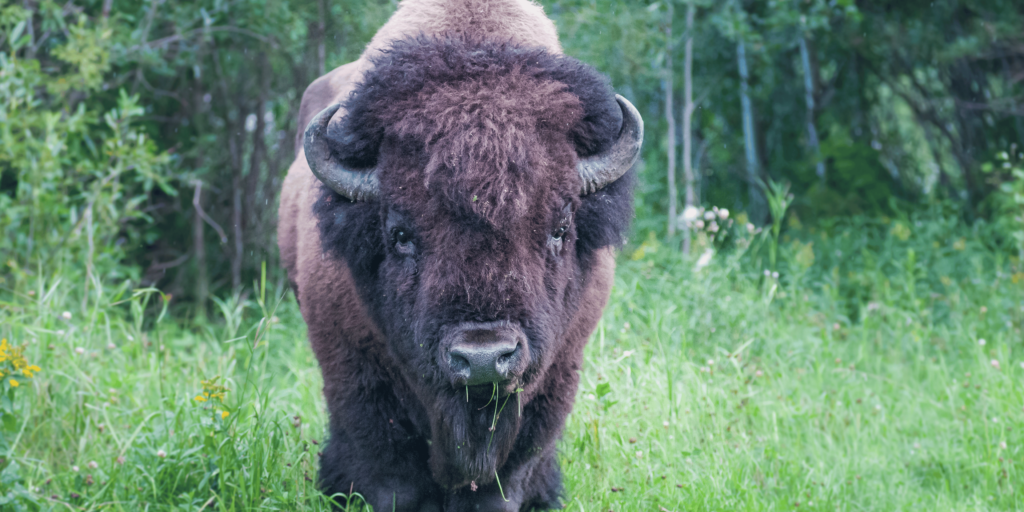
Bison Or Buffalo?
This resource covers American (plains and woods) Bison and European Bison. In the United States, bison are more often than not referred to as buffalo. Technically, “buffalo” refers specifically to Cape buffalo (African Buffalo) and water buffalo (Asian Buffalo). However, we wish to acknowledge that many may refer to them as buffalo, and it doesn’t really matter so long as everyone is on the same page regarding the species of the individual you are speaking about.
Bison may not be the first species you consider when you think of a farmed animal sanctuary. However, if you are reading this, this means you may be caring for or considering caring for a bison resident at your sanctuary! This resource will provide you with a basic introduction to their care needs. Like other species at farmed animal sanctuariesAnimal sanctuaries that primarily care for rescued animals that were farmed by humans., bison are often exploited for human benefit. They are raised for their flesh, milk, and coats and used for racing, riding, and carrying heavy loads. You may find your board and staff considering taking bison in at some point. Now is a great time to discuss with your board and care team the feasibility of caring for bison at your sanctuary. It may be that caring for bison just isn’t right for your sanctuary, and that is okay. However, if you find yourself in the role of caregiverSomeone who provides daily care, specifically for animal residents at an animal sanctuary, shelter, or rescue. for bison residents, it is vital that you have a solid understanding of their needs. While this resource isn’t an exhaustive guide for caring for bison residents, it provides a starting point for learning about bison care for rescues and sanctuaries.
Let’s Talk About Bison

Before you can properly care for a resident species, it is important to learn about the species in general. Consider things such as where they evolved/live and what that environment is like. How did they evolve? What foods do they eat, and how do they find food? Do they live in herds? What are common social behaviors? Who are potential predators? For example, recognizing that plains bison live in open plains, are nomadic, and can run up to nearly 40 miles per hour can help you provide the best living spaceThe indoor or outdoor area where an animal resident lives, eats, and rests. for them. They generally live in herds (though males and females often have separate groups), so unless an individual strongly prefers to be alone, they need some social group. Regarding social groupings, bison and cowsWhile "cows" can be defined to refer exclusively to female cattle, at The Open Sanctuary Project we refer to domesticated cattle of all ages and sexes as "cows." can interbreed, with their offspring being sterile. Since sanctuaries should not allow their residents to breed, this obviously has serious importance when considering living arrangements! We will touch more on specific care considerations later. Let’s first look at some basic information about bison.
It’s important to remember that bison who are bred and raised by humans are not really domesticatedAdapted over time (as by selective breeding) from a wild or natural state to life in close association with and to the benefit of humans. They are wildlife and shouldn’t be considered wooly cows. Both species of bison were nearly extinct due to human exploitationExploitation is characterized by the abuse of a position of physical, psychological, emotional, social, or economic vulnerability to obtain agreement from someone (e.g., humans and nonhuman animals) or something (e.g, land and water) that is unable to reasonably refuse an offer or demand. It is also characterized by excessive self gain at the expense of something or someone else’s labor, well-being, and/or existence.. However, there are ongoing conservation attempts at breeding and rewilding.
Here is a fast fact bullet list that will familiarize you with bison:
- Bison are ruminants, though it takes longer for food to move through their digestive system than it does for cows, meaning they can get more nutrients from more fibrous plants.
- Both species of bison are grazers, though European bison will browse more than their American counterpart.
- Male American bison (bulls) can weigh up to 2,000 pounds and reach 6 feet tall, and American female bison (cows) can weigh up to 1,000 pounds and reach 4-5 feet tall.
- In the wild, bison have a lifespan of 15-25 years, though some have lived up to 40 in captive environments.
If you find yourself considering taking in a bison resident, there are some things you will want to consider first:
- Caring for bison residents may require special permits or may not even be allowed on your land, depending on local zoning ordinances.
- Bison can make some… interesting sounds. Consider whether sounds might carry to a nearby neighbor and cause any disruption. You don’t want to deal with an unhappy neighbor!
- Bison require specialized care. Do you have the appropriate facilities, experience, and knowledge to care for bison residents properly? Can you access an expert? Is there a vet that can provide care for them?
- While bulls tend to wander alone on the outskirts of herds, females and younger bison are social and should ideally have other bison as companions. This isn’t always possible, as you likely don’t get many bison rescue requests. Will you be able to provide them with the companionship they need? (See social needs below!)
- Transporting bison will require vehicles/trailers that can accommodate their size.
- In the US, some interstate travel will require bison to have an interstate certificate of veterinary inspection (ICVI) or other official document. There may be similar requirements in other countries.
Living Spaces
Indoor Living Spaces
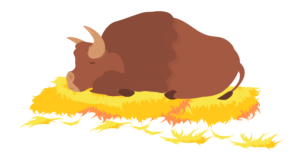
Generally, bison seem to prefer being outside, but they should still have access to an appropriate indoor living space so they can choose where to spend their time. Bison residents should have ample room to move about and lie down inside. While bison are generally capable of handling fairly extreme hot and cold weather, providing them with protective living spaces that promote health and well-being is still necessary. In some cases, a four-sided indoor living space may not be necessary (unless predation or extreme weather conditions are an issue in your area). A three-sided structure that protects residents from prevailing winds and rains and provides shade may be adequate, as a healthy bison is quite hardy.
Bison grow warm, wooly coats in cooler weather. If you are transporting a new bison resident from an area with a different climate, be sure they have the appropriate coat for the weather in your area. An ill-adapted bison resident may need temporary protection or assistance in shedding their coat. Bison will generally shed much of their coat without assistance, though if they are accustomed to human touch and enjoy it, brushing/pulling can also be a good opportunity to spend time and get to know a resident!
Remember, if you are bringing new bison into your life, you must also ensure that you have an appropriate quarantineThe policy or space in which an individual is separately housed away from others as a preventative measure to protect other residents from potentially contagious health conditions, such as in the case of new residents or residents who may have been exposed to certain diseases. space to keep you and your existing residents safe!
Among other things, height is a key consideration when providing appropriate indoor living spaces and outdoor covered spaces for bison residents. Bison can measure up to 6ft. The important elements of any structure are:
- Appropriate height
- Ventilation (but not a drafty space)
- Dry
- Safe access for caregivers
- Secure gates and latches
- Ample space for comfortably moving around, laying down, and preventing social conflict
- Non-slip cushioned flooring
- Protection from predation
Flooring
Dirt or sand-covered flooring or another slip-resistant material is important for bison living spaces since slips and falls could lead to torn ligaments and joint damage. If your floor is concrete, you should layer half a foot of dirt onto the concrete floor or use rubber mats if necessary. Be sure to consider cleaning ability when putting in flooring. Bare concrete and hardwood floors are unacceptable for areas where residents must stand or lie down for long periods. However, providing some textured substrate like cement in a small portion of their living space can help keep hooves nice and trim. Just be sure this area is a slip-free zone!
At The Open Sanctuary Project, unacceptable means that we cannot condone (or condone through omission) a certain practice, standard, or policy. See a more detailed explanation here.
Bedding
Ideally, you should provide a lot of dry and clean bedding in a bison’s indoor living space. As mentioned above, they may not want to stay indoors much. Bison are hardier than many species, but offering them extra bedding material in colder weather is still a good idea. Not only can it offer protection from the cold ground, but it is more comfortable too. If they choose to use this space, you must remove and replace all wet and soiled bedding to prevent health risks to bison. Bedding options include straw, bison-safe wood shavings, or sand. While we have not come across reports of sand impaction in bison, for other ruminant species, it is generally recommended that steps be taken to prevent ingestion of sand to prevent impactions. Therefore, if using sand in bison living spaces, folks should consider keeping food up off the ground.
If your sanctuary is located in an area that experiences extremely high temperatures and humidity, straw bedding should be minimized. Sand or soil would be more appropriate in this case. If using sand, you must ensure you can still keep it clean and dry.
Outdoor Living Spaces
Bison residents should have access to a dynamic outdoor space that allows them to move freely, stretch their legs in a run if they like, and explore. Bison are more nomadic than cows and tend to eat a bit in one spot and then move on to another over a large space – like a patchwork quilt! So, the bigger the space, the better. This may be different for ill, injured, or senior bison.
Bison appreciate a nice dust bath, so providing this would be a great start to an engaging living space. They will roll in the dirt to dislodge parasites, protect their skin, and shed their winter coats. In the wild, they often create their own “dugouts” or “wallows” for this purpose. When creating an outdoor living space for bison residents, really consider who they are as a species, as well as who they are as individuals. Check out our resource on animal-centered design for more information and inspiration! Adding different sensorial and topographical elements can positively impact a resident’s well-being. Ensure that their outdoor living space has good drainage and access to dry ground in the event of rain. A large mound of sand can be provided for standing if there are wet or soggy areas to avoid.
Fencing For Bison

Some bison residents may not feel the need to leave their living space, but others may be driven by the desire to explore spaces or simply move over larger areas. A bison leaning against a post or running can easily break through loose or weak fencing. For this reason, it is important to ensure that fencing is solid, secure, and at an appropriate height to ensure a resident can’t easily “climb,” jump, or push through a fence or gate. When choosing fencing materials, including gates and latches, opt for those made from heavy-duty materials. You don’t want injured or missing bison residents! Sources vary, but several state that a 5-6 foot fence should be fine if it is well constructed and the bison have everything they might want in their living area. Some veterinarians even recommend two fences. When building fencing, think carefully about the space you are working with, any potential temptations for bison residents to leave their outdoor living space, and the resident’s personality.
All fencing should be in good repair, without spacing that could result in residents catching their head, horns, or limbs. Additionally, gates and fencing must be solid and secure. Posts should be set in cement. For gates, we recommend a double latch-type gate system.
Check living spaces for sharp protrusions, nails, and screws to prevent external damage, and be sure to carefully check their surroundings for things like dropped coins, bits of metal, and string to prevent foreign body ingestion.
Predator Proofing For Bison
While many of you may live in areas where predation of bison isn’t a great concern, some of you may have sanctuaries where there are large predators such as big cats, bears, or wolves. Generally speaking, calves, sick or injured residents, and senior residents are at greater risk. Calves are at the highest risk. Check out this resource to learn about compassionate strategies to deter wildlife at your sanctuary.
Nutritional Needs
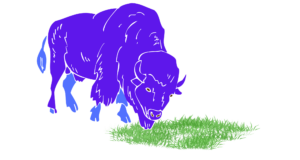
Bison are ruminants with a highly structured digestive system that results in longer food retention time and pulls more nutrients than a cowWhile "cow" can be defined to refer exclusively to female cattle, at The Open Sanctuary Project we refer to domesticated cattle of all ages and sexes as "cows." resident’s might, and, therefore, they can do more with less. More specifically, bison can pull more nutrients from high-fiber, low-protein forage. This is important to keep in mind when considering a bison resident’s diet – do not just assume their dietary needs are identical to a cow resident’s. Bison require less protein than cows. In fact, excessive levels of protein can actually cause health issues in bison. Bison graze mostly on grasses, sedges, or other region-dependent plants but will munch on woodier stemmed foliage in winter. They will also eat moss and lichen in the cold winter months. European bison, specifically, eat more browse than American bison.
A bison’s metabolism is connected to day length and how this correlates with the seasons. This is because they need to be able to survive harsh winters in the wild. It isn’t uncommon for adult bison to lose weight during the winter, and a veterinarian may suggest supplementation to keep weight on your resident.
Main Diet
At a sanctuary, bison residents will need a fibrous, forage-based diet. If you are lucky enough to have enough native pasture acreage at your sanctuary, they will generally do quite well with that. Contact your local extension office for more information about the soil and plant species best suited to grazing in your area. If pastures lack enough forage, hay should be the bulk of their diet. It is important to know that different hays provide different levels of nutrients and digestibility. This can affect the amount of hay residents eat daily and whether supplementation with commercial food pellets is necessary (and how much is required). Bison can do well with dry brome, blue, timothy, and crested wheatgrass. They will also consume clover and alfalfa.
The amount of “dry matter” bison need daily depends on the nutritional makeup of the dry matter they are consuming. Talking with an experienced veterinarian about the best diet to feed bison residents is important. However, they should always have access to forage. A veterinarian may recommend supplementing their diet with grain if access to quality hay or pasture is limited. Grain should only be a supplement, however, with forage making up the bulk of the diet. Bison residents can also have some fruits and veggies (bison-safe and in moderation) as treats. Remember, any changes in the diet should be made gradually to avoid health issues like grain acidosis/overload.
Minerals
Bison require micro and macro minerals and vitamins. In addition to their main diet, bison residents should have access to loose salt/minerals or soft salt/mineral blocks. Check with your veterinarian to determine the best choice for your resident. The amount of added minerals bison require depends on several factors, including the nutrient levels in pasture forage, hay, and commercial grain products. For example, the soil in the Eastern United States is generally low in selenium. If bison residents do not receive the necessary selenium, they can suffer from white muscle disease, weakness, and stiffness. Let’s take a closer look at dietary deficiencies that bison might be susceptible to.
Dietary Deficiencies
Bison are specifically vulnerable to certain dietary deficiencies, such as Selenium, Vitamin E, and Copper. They are also vulnerable to toxicosis if they consume high levels of certain vitamins and minerals. The following are examples of the diseases different deficiencies may cause:
Copper deficiency – Swollen joints, fragile bones, lameness, coat changes
Phosphorous deficiency – Rickets, pica, bone softening
Potassium deficiency – Diarrhea, an unsteady walk, muscle weakness, stunted growth
Selenium deficiency – White muscle disease, muscle stiffness, lethargy
Vitamin A deficiency – Rough skin, slow bone growth, night blindness
Vitamin D deficiency – (In young bison) Rickets, knocked knees, enlarged joints, bowed legs, osteomalacia (bone softening), muscle spasms
Zinc deficiency – Rough skin, poor coat health, stunted growth, poor appetite
As mentioned above, many of these vitamins and minerals can also be toxic in large quantities so it is vital you speak with your veterinarian about any dietary considerations for bison residents.
Water
All residents should have continual access to clean water. In the winter, it is important to ensure waterers are not frozen, and in the summer, it is vital they do not run out of water and water temps are not too hot. Bison will eat snow if it is in abundance but should always be provided with water.
Medical Care For Bison
Like other ruminants, bison are susceptible to external and internal parasites and should be monitored for both. Be sure to consult with your veterinarian for treatment recommendations if parasites are found. You should also work with an experienced veterinarian to establish internal parasite screening and management protocols. Conditions like sarcoptic mange, calf scours, malignant catarrhal fever, brucellosis, mycoplasma infection, pink eye, and many other health conditions can affect bison residents and should be discussed with a local experienced veterinarian regarding risk profiles and appropriate care. All bison residents should be routinely given a health check. Be sure to observe the resident’s behavior and mobility, then check their coat, skin, neck, abdomen, back, limbs, feet, nose, mouth, eyes, and genital area.
Here are a few health-related things to consider (and to discuss with your veterinarian, if needed):
- Vaccinations
- Internal and external parasites
- Dental health
- Dietary deficiencies
- Hoof trimming
- Regional disease risks
It is important to learn what a healthy bison looks like. There are some anatomical differences between American and European bison. Be sure to talk to your vet about how to recognize signs of health and signs of illness in your bison residents. When you understand what healthy looks like for your bison resident, you can catch health issues early.
Your veterinarian will recommend the best vaccinations, depending on your sanctuary’s region and the risk of contracting local illnesses. Vaccines for bovine viral diarrhea, clostridial diseases, infectious bovine rhinotracheitis infections, and brucellosis diseases may be recommended. Additional vaccinations may be recommended by your veterinarian.
Handling Bison Residents
Ask An Expert
Have a veterinarian or care expert give you hands-on training for safe bison handling! Failing to use appropriate techniques can gravely injure bison and cause serious injury and even death to the staff member handling the bison. Bison can kick, throw their head, gore, and trample. A bison tossing someone with a swift switch of their head can cause serious injury and can even be fatal in extreme circumstances. Because of their size, a bison can also injure someone by trampling them. If you’re caring for bison, you must know how to handle them safely. It can be quite challenging to conduct a health checkThe Open Sanctuary Project uses the term "health check" to describe health evaluations performed by caregivers who are not licensed veterinarians. While regular health checks are an important part of animal care, they are not meant to be a replacement for a physical exam performed by a licensed veterinarian. properly, load them, or provide medical care if they are reluctant. Some bison are more receptive to being handled than others, depending on their age, sex, reproductive status, and how they’ve been socialized. Some enjoy time with their caregivers and seek it out. Others may lean more on their wild side. They retain a wild behavioral repertoire in many cases. Each resident in your care might have their own special handling needs depending on their personality, history, and health needs. Regular trust sessions with bison residents can help familiarize them with different experiences and caregivers and can help make stressful events like health exams, separations, and relocations a little less nerve-wracking! Positive reinforcement bonding sessions can help build trust for safer handling.
Social Needs Of Bison
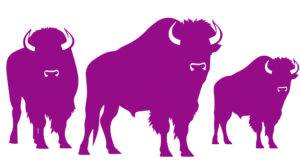
Bison are social animals and should generally have companions, ideally other bison. However, there are cases where it may not be appropriate to house groups together. In the wild, bulls often separate from the herd until breeding season, while cows (females) and young bison make up herds. Sometimes, younger bulls may form a small herd, but older bulls are generally solitary until they come into rut. When in a rut, a bull will “tend to” the female he hopes to breed with. This behavior may be seen even after the individual is neutered and is perfectly normal. During this time, the male will stay quite close to their intended mate and confront other males they feel may be a threat. If you care for a bull (intact male) who cannot be neutered for health reasons, they should not be housed with other bison or cows. Otherwise, your veterinarian will advise on the best time to neuter intact males. However, it is important to ensure their social needs are met. Some of this may be accomplished through various forms of social enrichment. Generally, female bison are less confrontationalBehaviors such as chasing, cornering, biting, kicking, problematic mounting, or otherwise engaging in consistent behavior that may cause mental or physical discomfort or injury to another individual, or using these behaviors to block an individual's access to resources such as food, water, shade, shelter, or other residents..
Be on the watch for behaviors such as charging, chasing, cornering, biting, kicking, problematic mounting, or other behaviors that may cause mental or physical discomfort or injury to another individual or are blocking an individual’s access to resources such as food, water, shade, shelter, or other residents.
If you only have a single rescue bison, consider taking in another in need of sanctuary. As with any group, sometimes disputes or bullying may occur. Finding a new grouping is important to prevent distress and injury if this becomes a problem. This can be especially true if two males begin seriously fighting, as they can cause fatal injuries. Any new introductions should be done slowly and carefully, ensuring the safety and comfort of the individuals.
Enrichment For Bison
Bison have inquisitive minds and enjoy exploring things in their living spaces. Offering browse is great. Providing multiple areas and substrates for wallows can help create a dynamic environment. Adding piles of various bison-safe substrates can provide new scents and textures to explore. To encourage movement and exploration, you can add other scents and herbs throughout their living space. Other ideas include securely attaching a large broom head to a sturdy foundation for good scritches and incorporating music, novelty, and learning sessions.
We hope this resource has been helpful. If your care staff is currently considering whether taking in a bison resident(s) is the right choice for your sanctuary, check out our resource, “25 Questions To Help Guide Responsible Intake Decisions At Your Animal Sanctuary“. We know it is a big choice to make, and considering multiple aspects with your care team can help you make the best decision. If you currently care for bison residents, we would love to hear from you!
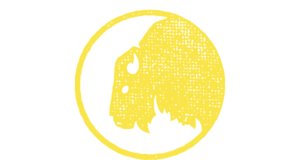
SOURCES:
How To Care For American Bison | Smithsonian National ZooAn organization where animals, either rescued, bought, borrowed, or bred, are kept, typically for the benefit of human visitor interest. & Conservation Biology Institute (Non-Compassionate Source)
American Bison (Bison bison) Fact Sheets | San Diego Zoo Wildlife Alliance (Non-Compassionate Source)
General Care Bison | Nelson Road Veterinary Clinic (Non-Compassionate Source)
Animal Disease Traceability Requirements For Cattle And Bison Moving Interstate | APHIS (Non-Compassionate Source)
Bison Bellows: Vocalization | National Park Service (Non-Compassionate Source)
Sound Library – Bison | National Park Service (Non-Compassionate Source)
Basic Nutrition of Bison | Saskachewan Agriculture (Non-Compassionate Source)
Copper Balance In Bison – Are Your Bison Getting Enough? | Western College Of Veterinary Medicine (Non-Compassionate Source)
Bison Nutrient Requirements | Code Of Practice For The Care And Handling Of Bison: Review Of Scientific Research On Priority Issues 2016 (Non-Compassionate Source)
Development And Assessment Of A Body Condition Score Scheme For European Bison (Bison Bonasus) | Animals (Non-Compassionate Source)
What’s The Score: Bison | Body Condition Scoring (BCS) Guide (Non-Compassionate Source)
Bison Behaviour | Code Of Practice For The Care And Handling Of Bison: Review Of Scientific Research Priority Issues (Non-Compassionate Source)
American Bison (Bison Bison) Fact Sheet: Behavior & Ecology | San Diego Zoo Wildlife Alliance (Non-Compassionate Source)
Social Organization And Decision Making In North American Bison: Implications For Management | Ryan A. Shaw, Doctorate Of Philosophy, Utah State University (Non-Compassionate Source)
Dangerous Wild Animals: Species Guidance: Bison | Agriculture and Rural Economy Directorate, Scottish Government (Non-Compassionate Source)
Non-Compassionate Source?
If a source includes the (Non-Compassionate Source) tag, it means that we do not endorse that particular source’s views about animals, even if some of their insights are valuable from a care perspective. See a more detailed explanation here.






